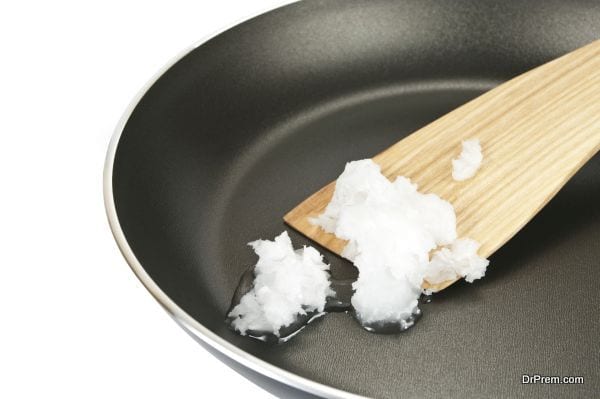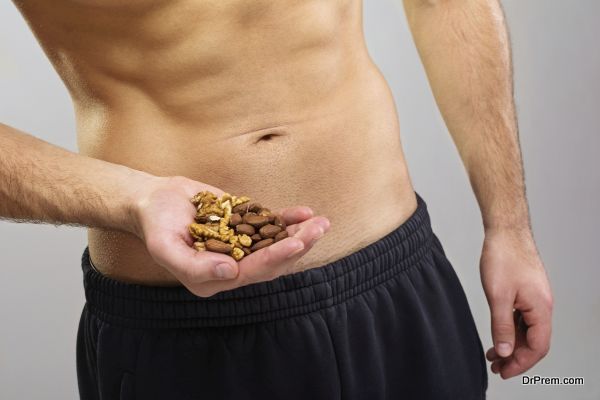Getting fat or putting on extra weight can only increase your worry, if you do not know the riddle behind good, bad or unhealthy fat. Will eliminating fats for weight loss solve all our problems? Unfortunately, it is not that much easy. Our body actually needs fat to survive. They are important ingredient in our diets as they release healthy fatty acids, vitamins that are fat soluble and also keep our skin soft. They are a great source of energizing the fuel in the body. Here are some different types of fats found in our food.
Fats are a large group of compounds that are soluble in organic solvents and are insoluble in water.
But one can easily get confused between good fat vs. bad fat and how much shall we consume each of them, how shall we avid the trans fats and what role does omega- 3 fatty acid play in keeping our heart healthy.
What are the different forms of fats?

- Oils: it is a fat that exists in liquid state at room temperature. They are such substances which do not get mixed in water and has a greasy touch.
- Animal fats: fats in cream, lard, butter or meat.
- Vegetable fats: corn oil, flax seed oil, peanut oil and olive oil.
- Fatty acids: they are particularly such fats which are solid at room temperature
- Lipids: they are all sorts of fats, whether solid or liquid.
Types of fats
There are a various types of fats in nature. Let’s take a look of them:
Saturated fats
 They are such fats that are solid at room temperature and are sometimes called as solid fats. They are purely saturated, which means that every fat molecule is covered with hydrogen atom. Healths risks are increased if too much of such fats are consumed by a person for long time. A major intake of saturated fats can eventually increase the cholesterol levels which can further increase the risk of strokes and cardiovascular diseases.
They are such fats that are solid at room temperature and are sometimes called as solid fats. They are purely saturated, which means that every fat molecule is covered with hydrogen atom. Healths risks are increased if too much of such fats are consumed by a person for long time. A major intake of saturated fats can eventually increase the cholesterol levels which can further increase the risk of strokes and cardiovascular diseases.
Where are they found?
Most of the saturated types of fats are found in cocoa butter, palm oil, coconut oil, chips, pastries, biscuits, cakes, dairy products, poultry skin, meat products and mammal meats.
A healthy diet should only contain less than 10 percent of the calories from saturated fats. Never replace the intake of saturated fats with refined sugar or carbohydrates, as this could even worsen your health.
Unsaturated fats:

Polyunsaturated and monounsaturated fats are included in the category of unsaturated fats as they are liquid at room temperature. They are mostly obtained from plants and are regarded as good fats.
Monounsaturated fats
The molecules of monounsaturated fats are not saturated with hydrogen atoms. Each of the molecules has space for just one hydrogen atom. These fats can lower the low- density lipoprotein cholesterol and keep the levels of high density lipoprotein higher. But if the intake of saturated fats is not reduced, the levels of cholesterol remain unchanged.
Many of the health professionals say that the risk of developing heart diseases is reduced by such fats.
Where are they found?
 They are found in avocados, peanut butter, nuts, olive oils and olives.
They are found in avocados, peanut butter, nuts, olive oils and olives.
Polyunsaturated fats
Each of the polyunsaturated fat molecules has spec around it and is not saturated with hydrogen atom. It is said by the nutritionists that the polyunsaturated fats, especially obtained from the fish are extremely healthy for the body as they have omega- 3 fatty acids in them.
The chances of heart diseases are lowered by consuming omega- 3 fatty acids as it lowers the cholesterol levels in blood and possibly reduce the inflammation levels. It is recommended by health care professionals that the symptoms of joint problem, arthritis and some skin diseases are also reduced by it.
Another important polyunsaturated fat is Omega-6 fatty acid. It is mostly found in processed foods and vegetable oils. An excessive consumption of omega-6 can cause inflammation.
Where are they found?
 They are found in pastured eggs, seeds, nuts, sunflower oil, soybean oil, safflower oil, grapeseed oil, and oily fish.
They are found in pastured eggs, seeds, nuts, sunflower oil, soybean oil, safflower oil, grapeseed oil, and oily fish.
Trans fats:
Trans fats are made synthetically and do not occur on their own naturally. Industrial processes are involved to add hydrogen to vegetable oils to make them solid. They are also regarded as partially hydrogenated oils. Trans fats are not required by the human body and do not promote any good health. Consuming Trans fats can increase the levels of LDL cholesterol and lowers the HDL cholesterol levels. This raises the chances of developing coronary heart diseases and stroke about 3X more than other harmful fats.
Experts state that the Trans fats from partially hydrogenated oils can worsen the health as compared to other naturally occurring oils. May of the food companies are increasingly relying on Trans fats as they are cheap and easy to use and produce. They are also long lasting and give a nice taste. They are used basically on commercial fryers, fast food restaurants and outlets. Many states including California and New York have banned the processing of Trans fats.
Where are they found?
 Trans fats are commonly found in baked foods, fast foods, packed foods, shortenings, stick margarines, crackers, cookies, pizza dough, biscuits, pastries, pies, doughnuts and French fries. It partially hydrogenated oils are included in the nutritional packing of a substance; this means it has Trans fat in it. The American Heart Association has stated that the consumption of Trans fats should not exceed 5- 6 percent of the total intake of the calories as even a small amount of it can increase the amount of risks. Avoid these fats for weight loss.
Trans fats are commonly found in baked foods, fast foods, packed foods, shortenings, stick margarines, crackers, cookies, pizza dough, biscuits, pastries, pies, doughnuts and French fries. It partially hydrogenated oils are included in the nutritional packing of a substance; this means it has Trans fat in it. The American Heart Association has stated that the consumption of Trans fats should not exceed 5- 6 percent of the total intake of the calories as even a small amount of it can increase the amount of risks. Avoid these fats for weight loss.
The message to keep in mind and develop awareness through this, is that all the fats are not equal in response. Stay informed about saturated or unsaturated fats and read the labels before making dietary choices and replaces the consumption of unhealthy fats with health fats obtained from fibrous plants. Make a comparison in good fat vs. bad fat before buying a product.

